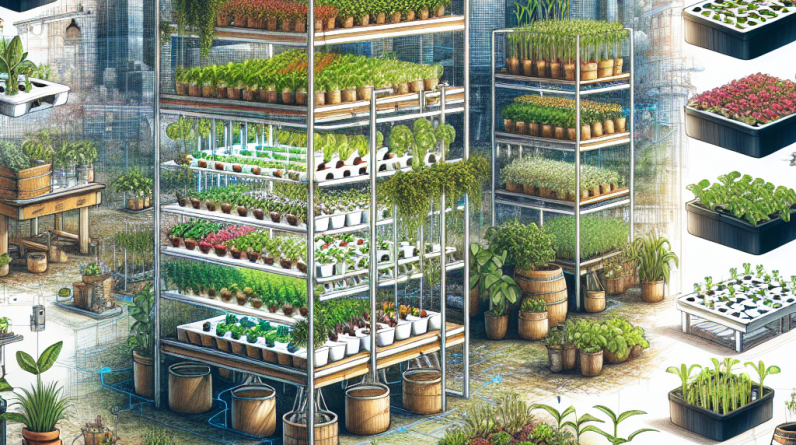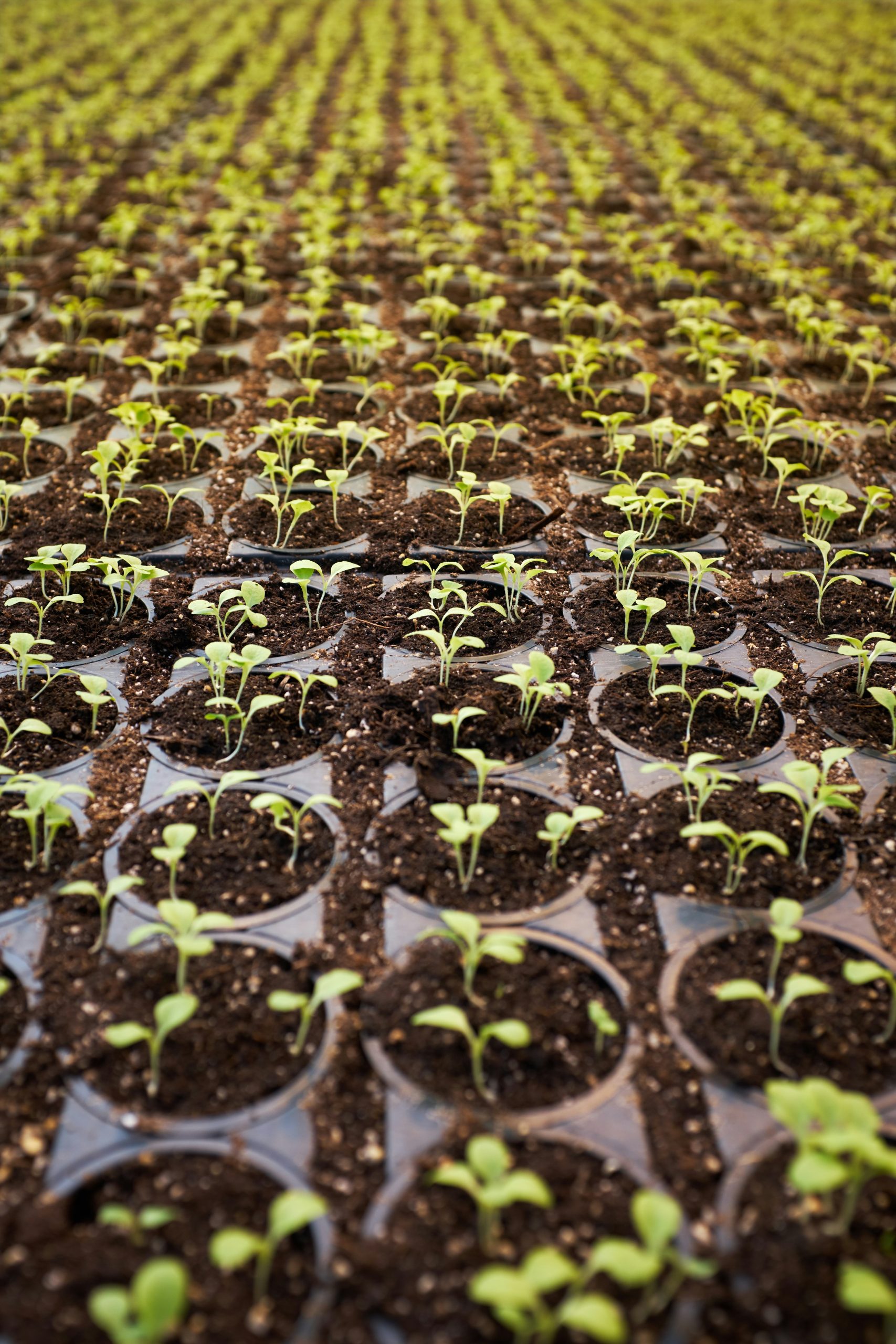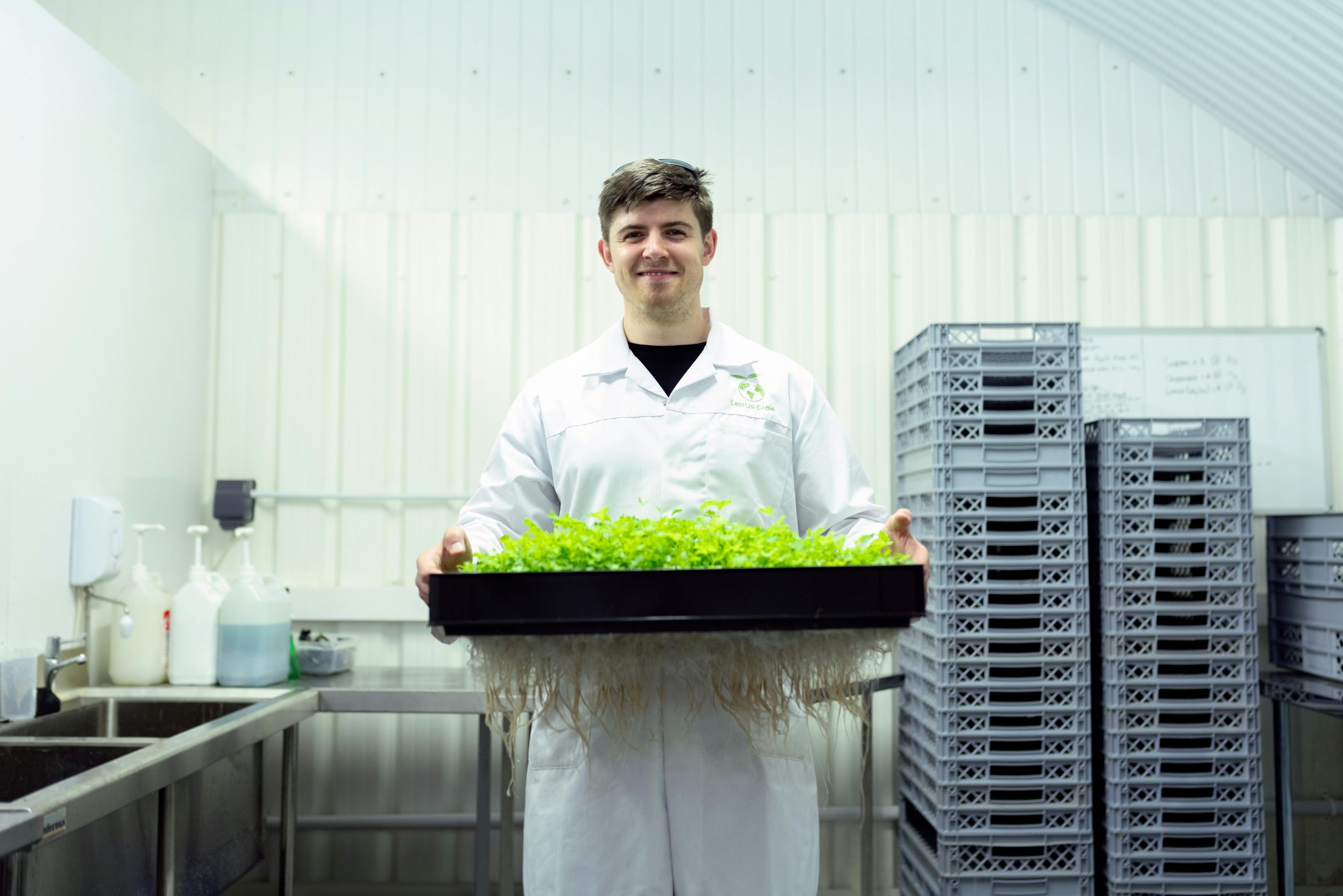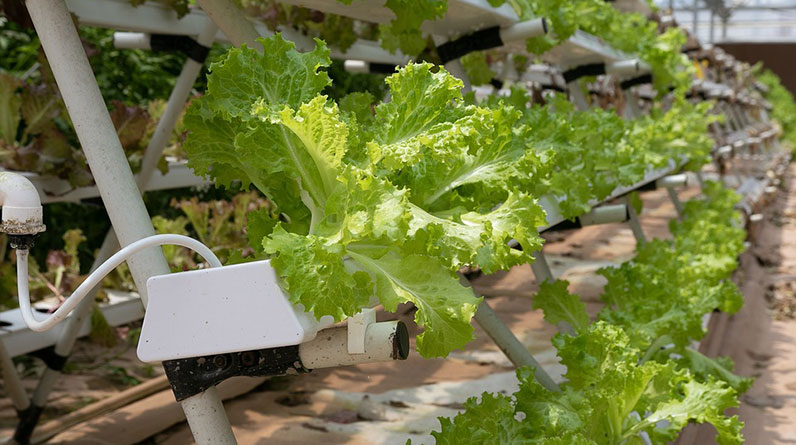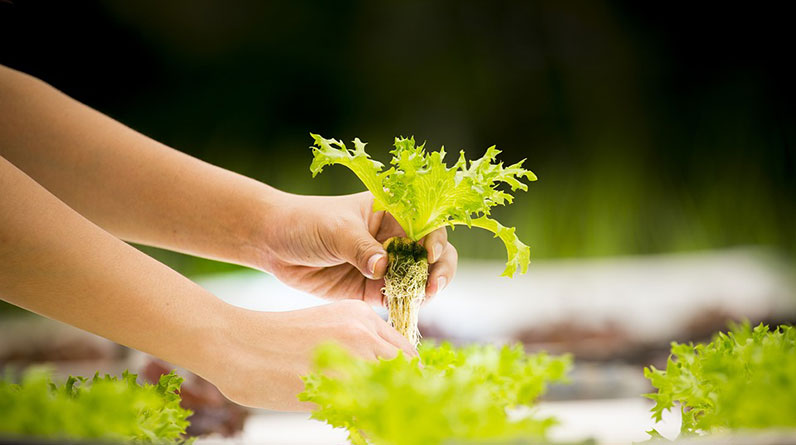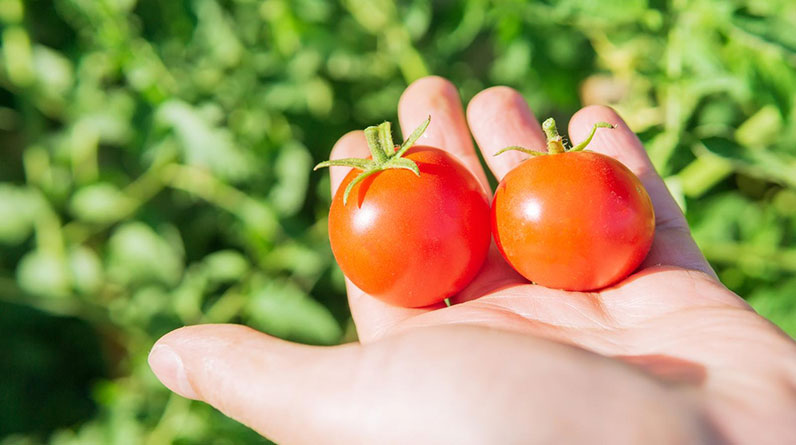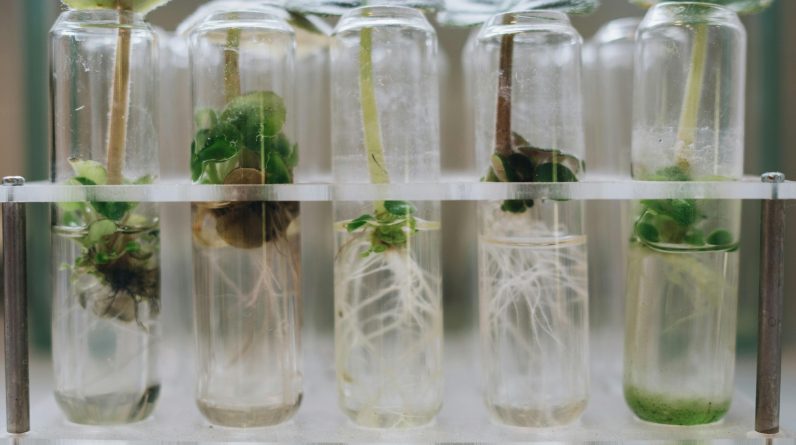
- 1. Choose the Right Hydroponic System Type
- 2. Optimize Lighting for Indoor Growth
- 3. Maintain Precise Nutrient Balance
- 4. Ensure Proper pH Levels
- 5. Automate Your Water and Nutrient Delivery
- 6. Manage Air Circulation and Temperature
- 7. Monitor Environmental Conditions with Sensors
- 8. Regularly Clean and Sterilize the System
- 9. Use High-Quality Growing Mediums
- 10. Continuously Educate and Adapt to Trends
1. Choose the Right Hydroponic System Type
Understanding Different Hydroponic Setups
In 2025, selecting the right hydroponic indoor grow system is crucial for success. There are several popular options, including nutrient film technique (NFT), deep water culture (DWC), and aeroponics. Each type offers unique advantages depending on your crops, space, and budget.
For example, NFT systems work well for leafy greens and herbs due to their efficient nutrient flow. DWC setups are excellent for larger plants like tomatoes because they provide roots with constant oxygenation and moisture.
When choosing, consider your space constraints and plant needs. A well-matched hydroponic indoor grow system maximizes yield and minimizes issues like root rot or nutrient deficiencies.
Practical Tips for Selection
Start by assessing your available space and budget. If you want quick setup and high productivity, DWC might be your best choice. For simplicity and scalability, nutrient film systems are good options.
Research current best practices for 2025, as newer innovations like modular systems might offer easier maintenance or better efficiency. Always opt for systems made with durable, food-safe materials, which are increasingly available in the market.
Finally, consider expanding your system gradually. Many growers start with a small setup and scale as they gain experience or demand increases.
2. Optimize Lighting for Indoor Growth
Choosing the Right Grow Lights
Lighting is a key factor in a successful hydroponic indoor grow system. In 2025, LED grow lights dominate the market because they are energy-efficient and customizable. Selecting the appropriate spectrum and intensity will influence plant health and yields significantly.
For leafy greens, full-spectrum LEDs with a blue light emphasis promote healthy leafy growth. Fruit-bearing crops, like peppers and tomatoes, benefit from red and far-red spectrums that simulate sunlight and encourage flowering.
Keep in mind that light coverage and placement are critical. Use reflectors and ensure even light distribution to avoid shadowed areas that hinder growth.
Timing and Light Cycles
Automated timers help maintain consistent light schedules, which are vital for plant development. In 2025, smart lighting systems can adjust intensity and spectrum dynamically based on real-time sensors or plant growth stages.
Most indoor plants require 14-18 hours of light daily during vegetative stages, and 12 hours during flowering or fruiting. Properly managing light cycles can lead to faster growth and higher yields.
Investing in high-quality lighting equipment that lasts and consumes less energy can save costs over time while supporting your hydroponic indoor grow systemâs sustainability goals.
3. Maintain Precise Nutrient Balance
Understanding Key Nutrients
In a hydroponic indoor grow system, nutrients are dissolved directly into water, making precise monitoring essential. The main macronutrients include nitrogen, phosphorus, and potassium. Micronutrients like calcium, magnesium, and iron also play critical roles in plant health.
In 2025, advanced nutrient formulations incorporate controlled-release ingredients and water-soluble blends tailored to specific plant types. Proper nutrient balance ensures vigorous growth and high-quality yields.
Use monitoring tools, such as EC meters, to measure electrical conductivity, which correlates with nutrient concentration. Keep parameters within optimal ranges to prevent deficiencies or toxicities.
Strategies for Nutrient Management
Develop a nutrient feeding schedule based on crop stage. For instance, seedlings require milder nutrient solutions, whereas flowering plants need higher phosphorus and potassium levels.
Regularly check and adjust nutrient concentrations. Small deviations can lead to growth issues or poor taste and appearance of produce.
Be mindful of regional water quality, as high mineral content can skew nutrient balancing efforts. In 2025, integrating digital nutrient management tools can streamline this process for hobbyists and commercial growers alike.
4. Ensure Proper pH Levels
Why pH Matters
Maintaining the correct pH in your hydroponic indoor grow system is vital for nutrient absorption. Most plants thrive when pH is between 5.5 and 6.5. If the pH swings outside this range, essential nutrients become unavailable, leading to deficiencies.
In 2025, automatic pH control systems and test kits make daily adjustments easier. Consistent pH levels promote healthier root systems and optimal growth rates.
Monitoring pH regularly, at least daily, is a best practice. Small pH fluctuations can accumulate and impact overall crop vitality.
Adjusting pH Effectively
Use specific pH adjusters, like pH Up or pH Down solutions, to correct imbalances. Always add adjustments gradually, mixing thoroughly before testing again.
Incorporate digital pH meters with calibration features for more consistent results. These tools save time and improve accuracy in managing your hydroponic indoor grow system.
Proper pH maintenance reduces nutrient lockout, improving plant health and maximizing yields in 2025’s competitive indoor gardening market.
5. Automate Your Water and Nutrient Delivery
Benefits of Automation
Automation reduces manual effort and ensures consistency for your hydroponic indoor grow system. Timed pumps or nutrient dosing systems deliver precise amounts of water and nutrients, minimizing human error.
In 2025, smart automation integrates with sensors and control apps to monitor conditions remotely. This allows for real-time adjustments, leading to healthier plants and higher productivity.
Automation also conserves water and nutrients, aligning with sustainability goals while enhancing overall system efficiency.
Choosing the Right Equipment
Invest in reliable pumps, timers, and controllers compatible with your system size. Modular systems allow expansion and customization as your needs grow.
Digital dashboards and data logging help track system performance, identify issues early, and optimize operations over time.
Proper automation minimizes risks such as overfeeding or drought stress, ensuring your hydroponic indoor grow system performs at its best throughout 2025.
6. Manage Air Circulation and Temperature
Creating a Suitable Environment
Healthy roots and vigorous plant growth depend on proper air circulation and temperature regulation. In 2025, climate control technology makes it easier for indoor growers to maintain optimal conditions.
Air circulators orFans prevent mold and disease, while maintaining consistent temperatures around 70-78°F (21-25°C). Use thermostats and exhaust systems to control heat generated by grow lights and electronic equipment.
Good airflow also strengthens plant stems and ensures uniform nutrient distribution. Regularly inspect your environment to prevent hot spots or stagnant air issues.
Implementing Climate Controls
Smart climate controllers integrate temperature, humidity, and airflow sensors, adjusting ventilation automatically. This reduces manual oversight and improves plant health.
Monitoring tools, like hygrometers and thermometers, provide data to fine-tune environmental variables. In 2025, data-driven decisions lead to improved yields and healthier plants.
Maintaining a stable environment minimizes plant stress and boosts the efficiency of your hydroponic indoor grow system.
7. Monitor Environmental Conditions with Sensors
Smart Sensors and Data Integration
Using sensors in your hydroponic indoor grow system helps track critical factors like humidity, temperature, COâ levels, and light intensity. In 2025, IoT-enabled sensors provide real-time data accessible via smartphone or computer.
This technology allows you to make informed adjustments promptly, preventing issues before they affect your plants. For instance, rising humidity levels can lead to molds, but sensors alert you instantly, enabling quick action.
Data logging over time also helps identify patterns and optimize your growing conditions for better yields.
Best Practices for Sensor Use
Place sensors at plant canopy level for accurate environmental readings. Regularly calibrate sensors to maintain precision.
Integrate sensor data with your control systems, enabling automated adjustments for lighting, ventilation, and irrigation in your hydroponic indoor grow system.
Involving technology in your setup increases efficiency, reduces guesswork, and supports sustainable practices in 2025 gardening trends.
8. Regularly Clean and Sterilize the System
Importance of Hygiene
Cleanliness is essential to prevent disease and algae buildup, which can compromise your hydroponic indoor grow system. In 2025, integrated sterilization methods, such as UV sterilizers and eco-friendly cleaning agents, enhance system hygiene.
Periodically flushing lines and containers removes nutrient residues and biofilms that may harbor pathogens. This maintenance extends equipment lifespan and supports healthy plant growth.
Establish a cleaning schedule based on your system size and crop type, ensuring consistent care and preventing costly infestations or plant losses.
Sterilization Techniques
Use food-safe disinfectants compatible with hydroponic components, following manufacturer guidelines. UV sterilization units can be installed inline for continuous sanitation.
Incorporate routine disinfection protocols, especially after cycles or crop changes, to maintain a pathogen-free environment.
Keeping your hydroponic indoor grow system spotless is one of the most straightforward ways to guarantee high yields in 2025 and beyond.
9. Use High-Quality Growing Mediums
Choosing the Best Mediums for Hydroponics
While hydroponic systems typically rely on inert mediums, selecting the right growing media enhances root development and overall plant stability. In 2025, options like coconut coir, rockwool, or clay pellets are popular due to their durability and low pathogen risk.
Quality mediums provide good aeration and moisture retention, crucial for consistent growth. Consider environmental impact â many growers prefer sustainable and recyclable options in 2025.
Test different mediums to find what suits your crop and system best, factoring in grow rate, yield, and ease of maintenance.
Proper Medium Handling and Replacement
Ensure your media is sterile before use to prevent contamination. Regularly inspect and replace media if it becomes compacted or contaminated.
Clean the media between harvests and sterilize if possible to maintain hygiene and maximize plant health.
High-quality growing mediums contribute significantly to the efficiency and productivity of your hydroponic indoor grow system, especially in a forward-thinking year like 2025.
10. Continuously Educate and Adapt to Trends
Stay Updated with Industry Innovations
The world of hydroponics is constantly evolving, especially by 2025, with innovations in LED technology, automation, and sustainable practices. Keep learning through online courses, industry publications, and networking with experts.
Adapting your hydroponic indoor grow system based on the latest research allows you to optimize yield, quality, and resource efficiency. Join local or online communities to share experiences and tips.
Remaining flexible and willing to upgrade or modify your system ensures you stay competitive and successful in your indoor gardening endeavors.
Implementing New Techniques
Test new crop varieties, nutrient formulas, or environmental controls as they become available. Consider sustainable upgrades, such as solar-powered systems or organic nutrients, aligning with 2025 trends.
Document your experiences and results to refine your methods continuously. Feedback loops between research and practice boost your expertise and crop outcomes.
Ongoing education is vital for maximizing your hydroponic indoor grow systemâs potential in 2025 and beyond.
Frequently Asked Questions
1. What is the best hydroponic indoor grow system for beginners in 2025?
Many beginners find deep water culture (DWC) or simple nutrient film technique (NFT) systems easiest to start with due to their straightforward setup and maintenance.
2. How often should I check pH and nutrients in my hydroponic indoor grow system?
Daily checks are recommended in 2025 to prevent issues. Consistent monitoring helps maintain optimal plant health and maximize yields.
3. Can I grow all types of plants with a hydroponic indoor grow system?
Most leafy greens and herbs thrive, and with adjustments, many fruiting plants like tomatoes, peppers, and strawberries can also be successfully grown indoors with hydroponics.
4. How do I prevent root diseases in my hydroponic indoor grow system?
Regular cleaning, maintaining proper pH, avoiding overwatering, and ensuring good airflow help prevent root diseases. Use sterilized media and equipment to minimize risks.
5. Why is the keyword ‘hydroponic indoor grow system’ important in 2025?
Optimizing your hydroponic indoor grow system with the latest techniques and technologies is essential for high productivity, sustainability, and adaptability in modern indoor gardening trends.
Conclusion
In 2025, mastering a hydroponic indoor grow system is more accessible and rewarding than ever. By applying these 10 expert tipsâranging from system selection and lighting to environmental control and ongoing educationâyou can optimize your indoor gardening experience to achieve maximum yields and quality. Staying informed about new trends and continuously refining your setup will ensure your success in the rapidly evolving world of hydroponics. Embrace innovation, sustainability, and careful management to thrive in 2025 and beyond!


